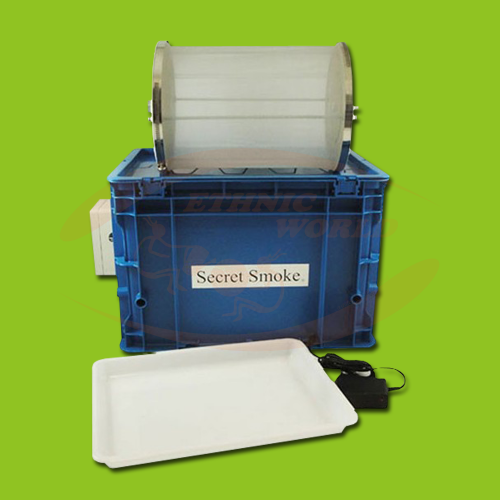
We're often asked "How much THC or CBD will your machines produce in dry extraction?" and the answer is "it varies", and this is due to a number of variables:
- The type of machine you choose, the parameters you choose, the post-processing technique, but the most important variable is the source material or biomass.
- You have to be very careful when it comes to Indoor cultivation because poor quality biomass will give poor quality extract. Worse still, if the biomass is contaminated with pesticides or other contaminants, the extract will be a concentrated version of the raw material.
Biomass, what is it and why is it so important?
For this reason alone, it is extremely important to have the original material tested before extraction begins, and also afterwards if there are traces (but undetectable in a test) of contaminants in the original material, they will be present in the extracted oil, since it is in concentrated form.
Biomass
Let's break down the term 'biomass'.
Cannabis plants grown indoors have 'buds' or 'flowers', which contain most of the cannabinoids and are the most valuable part of the plant. These buds are only found on female plants and they contain trichomes, which are the sticky nodules of the plant that contain THC and CBD (as well as other cannabinoids, but for the sake of brevity we'll stick to the main two!).
Preparing for extraction and creating the final biomass
Before extraction, the plant is dried and the buds are generally separated from the rest of the plant material. Because of their high value, they are usually sold as dried flowers, after any excess material has been removed. It is this material that is generally used for extraction, but (another variable!) growers sometimes grow low-grade hemp or cannabis and mix the whole plant (buds and all) once it is dried and, cumulatively, the extract has a potency of around 5-15%.
In comparison, a high-quality raw material has a potency of 15-25%. The mixed material, which contains the flower, stem, bud and leaves, is considered "biomass". Before being extracted, it must be completely dried (some processors use a freeze-dryer to remove every drop of moisture) and ground to the consistency of coffee grounds.
Obviously, bulk raw materials containing low levels of CBD and THC are cheaper than higher quality materials.
How to identify a good biomass
Test a representative sample
Identifying a good biomass simply by looking at it can be tricky, but not impossible. The first step is to ensure that the material is properly homogenised (mixed) and that you are testing a representative sample from the whole batch. It is advisable to examine the buds carefully to determine the density of trichomes. Trichomes produce cannabinoids, so a greater density of trichomes means a greater density of cannabinoids. Terpenes are also present in large quantities in the buds.
Terpenes
Terpenes are what give the plant its flavour and smell and are a very high-quality part of the plant. Most processors extract the terpenes first (they are fragile and cannot withstand high pressure and temperature), then set them aside. Once the rest of the biomass has been extracted and purified (distilled or refined to remove fats, waxes, lipids and other undesirable elements), the terpenes are added back to create a complete extract.
Consider a wine expert :
He always tests the smell of the wine before taking a sip. They can smell the terpenes, and the denser the terpene profile, the better the wine. Similarly, a plant rich in terpenes is more valuable because it can create a full-spectrum extract. Full spectrum is an extract that contains all the plant's compounds, all of which have beneficial properties and are more effective taken together than in isolation. Avoid any biomass that smells even slightly of mould!
Mould and parasites
Like any other plant material, cannabis and hemp can be infected by mould or parasites, especially if they are not dried or treated properly. Insects such as aphids, spider mites and mealy bugs can contaminate the plant and produce poor quality biomass, which should be avoided at all costs. Look for fuzzy white or grey spots, or traces of spider webs. Any white, fuzzy substance can also indicate the presence of mould, while powdery mildew leaves a flour-like residue on the plants. Any sign of insect or mould contamination means that the material is of poor quality and should not be used. To plan ahead, take a look at our Insecticide Traps section.
Examine the biomass and identify the parts of the plant
It's important to understand the proportion of buds, leaves and stems/stalks in your biomass. Indoor growing has its own special characteristics. Each component has a different cannabinoid density and a biomass rich in stems/stalks will have little or no cannabinoids, whereas a high level of buds means higher potency because they have a higher cannabinoid content. Most biomasses contain a large quantity of leaves, which are cut from the bud, but normal leaves also contain trichomes. The stems and peduncles are the least valuable part of the biomass.
Your Ethnic World team is at your disposal before purchasing any dry extraction system on our website!





















